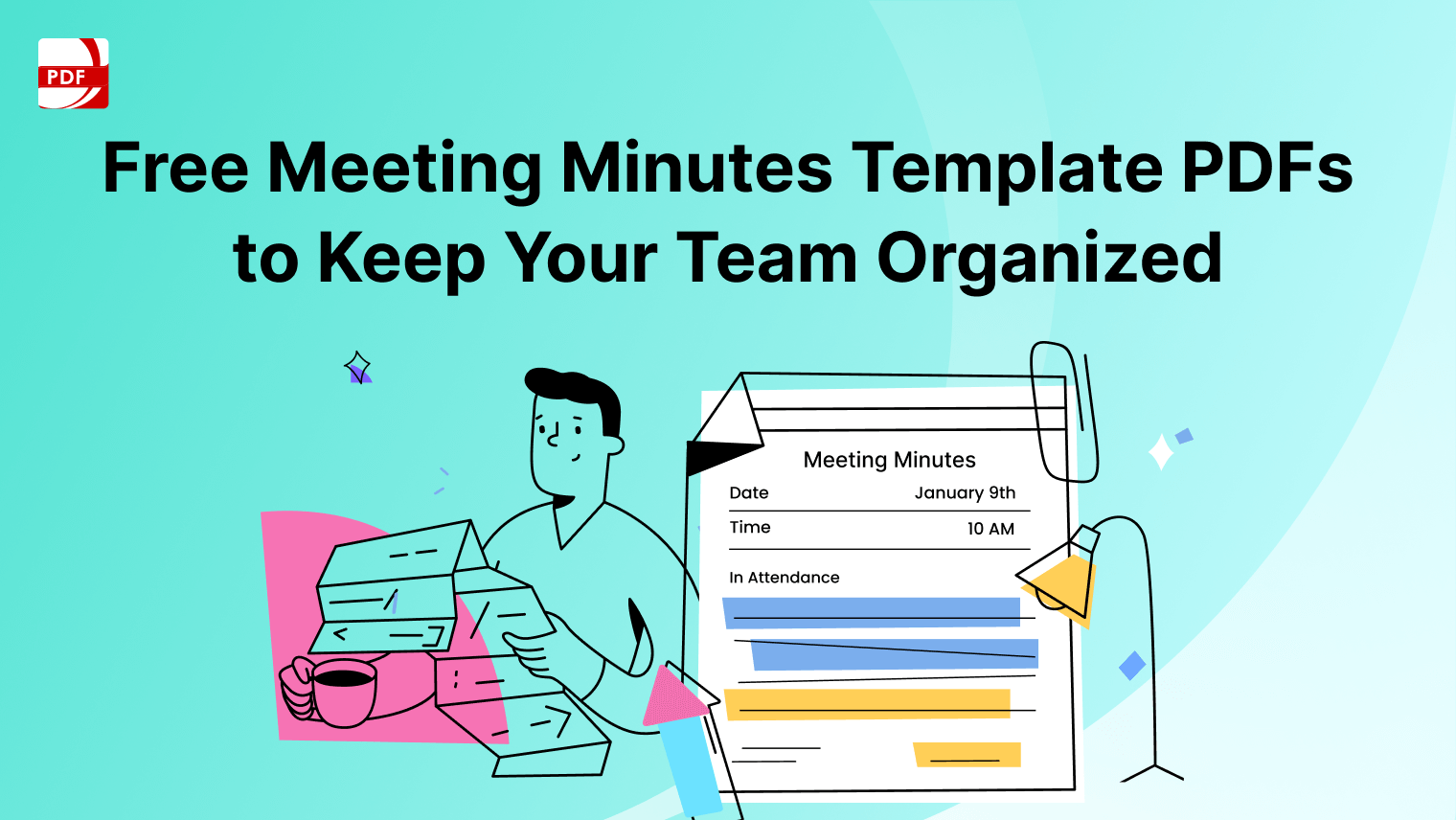Ever been in that frustrating spot where an important document just vanishes into thin air? It's like one minute you're on track, and the next, you're scrambling to recover what's lost. This isn't just about the inconvenience; it's about the ripple effect it has on your work, deadlines, and stress levels.
We're going to explore some smart ways to protect your files, with a little help from tools like PDF Reader Pro. It's all about making sure your hard work stays right where you left it. Ready to find out how?
Best Practices for Preventing Data Loss with PDF Reader Pro
When it comes to managing and safeguarding your PDF documents, PDF Reader Pro offers a suite of features designed to prevent data loss. Implementing best practices can make all the difference in protecting your valuable information. Here's how you can leverage PDF Reader Pro to its fullest potential:
Keep Your Software Updated
Regular updates to PDF Reader Pro introduce new features and patch potential security vulnerabilities. Ensure that you're running the latest version of the software to benefit from the highest level of security and functionality. These updates can prevent data loss caused by software malfunctions or security breaches.

Implement Password Protection
Protect Access with Passwords. For an additional level of security, use PDF Reader Pro's password protection feature on your documents. This prevents unauthorized viewing, editing, or sharing of your PDFs. Creating strong, unique passwords for each important document can significantly reduce the risk of data breaches.

Backup Your Documents Regularly
Regular Backups are Key. While PDF Reader Pro is a powerful tool for managing your PDFs, maintaining regular backups of your documents is crucial. Store backups in multiple locations, such as an external hard drive and cloud storage, to ensure that you can recover your documents if your primary storage fails or if you experience data loss on your device.

Practice Secure Sharing
When sharing PDFs with colleagues or clients, use PDF Reader Pro's secure sharing features to control how your documents are distributed and accessed. These features include options for watermarking documents to discourage unauthorized sharing and using secure links with limited access permissions.

Educate Your Team
Spread Awareness and Knowledge. If you work in a team, ensure that everyone is aware of the best practices for data security with PDF Reader Pro. Educating your team on the importance of document encryption, password protection, and regular software updates can help prevent data loss across your organization.
By following these best practices with PDF Reader Pro, you can significantly reduce the risk of losing important PDF documents and ensure that your data remains secure and accessible when you need it.
How Can You Protect Your Data Effectively?
1. Know Your Data:
- Understand exactly what types of information you have. This could include emails, documents, or customer information.
- Recognize which data is most valuable or sensitive, so you know what needs the most protection.
- Keep an inventory of your data so you always know where it is and how it's being used.
2. Make Rules for Your Data:
- Write down clear instructions on how to handle and protect your data. Think about who can see it and what they can do with it.
- Make sure your rules cover how to share data safely and how to store it securely.
- Review and update your rules regularly to keep up with changes in your business or new threats.
3. Pick Tools to Protect Your Data:
- Use security software like antivirus and encryption tools to keep your data safe from hackers.
- Set up firewalls to control what comes in and out of your network.
- Regularly update your security tools to make sure they can protect against the latest threats.
4. Teach Your People:
- Train your team on the importance of data security and how they can help keep data safe.
- Make sure everyone knows how to use the security tools and follow the rules you've set.
- Encourage a culture where people feel comfortable reporting mistakes or potential threats.
5. Watch and Check Often:
- Keep an eye on your data security measures to make sure they're working as they should.
- Use monitoring tools to watch for suspicious activity or attempts to access your data.
- Regularly review your security practices and make improvements where needed.
6. Continual Enhancement:
- Security needs change over time, so it's important to keep testing and improving your measures.
- Stay informed about new security technologies and methods that could help protect your data better.
- Encourage feedback from your team on security practices and use it to make your approach stronger.
7. Additional Considerations:
- Keep up with news on data security to be aware of new risks and learn how to defend against them.
- Connect with others in your industry through forums or communities like LinkedIn to share tips and experiences.
- Consider getting help from security experts if you need to strengthen your data protection strategies.
How Data Loss Occurs
Understanding the risks of data loss is the first step in preventing it. By recognizing the common causes and potential impacts, professionals and organizations can implement strategies to safeguard their data.
Human Error
Sometimes, it's as simple as accidentally deleting files or spilling coffee on a laptop. Human error is one of the most common causes of data loss, highlighting the need for robust backup systems and safeguards.
Technical Failures
Hardware has a lifespan. Hard drives crash, and power outages can happen at the worst times, leading to lost or corrupted files. Regular maintenance and backups are critical.
Malware and Cyberattacks
Viruses, ransomware, and other malicious software can encrypt, steal, or wipe out your data, often without a trace. Keeping software updated and being vigilant about cybersecurity can help mitigate these risks.
Natural Disasters
Fires, floods, and other natural calamities don’t discriminate, affecting both physical and digital realms. While less common, their impact can be devastating.
The Professional Consequences of Data Loss
Companies have developed cybersecurity practices and employ tools designed to protect and recover data. While the risk of data loss can never be entirely eliminated, proactive steps can significantly reduce its likelihood and mitigate its impact. However, here are some of the risks that it poses to professional companies.
Credibility Damage
Losing client data or failing to deliver work on time because of lost documents can tarnish your professional reputation. Trust is hard to build and easy to lose.
Financial Loss
The costs associated with recovering lost data, coupled with potential revenue loss from halted operations, can be significant. For businesses, this might also include legal fees if sensitive data is exposed.
Operational Setbacks
Data loss can halt projects, leading to missed deadlines and the need to redo work, which in turn affects productivity and can strain client relationships.
Legal and Compliance Issues
Certain industries have strict data protection and privacy regulations. Losing sensitive information can lead to legal repercussions and hefty fines.
Emotional Stress
Beyond the tangible impacts, the stress and anxiety of losing important work can't be overstated. It affects not just productivity but overall well-being.
Frequently Asked Questions
How does PDF Reader Pro protect my PDF documents?
PDF Reader Pro utilizes advanced encryption standards, including AES-256, to secure your documents. This encryption ensures that your files are protected against unauthorized access. Additionally, the software supports password protection, allowing you to restrict who can view, edit, or print your documents.
How can I recover a document if I forget the password?
For security reasons, PDF Reader Pro does not offer a direct method to recover lost or forgotten passwords to protect the integrity of your document. It's crucial to keep your passwords in a safe, memorable place. However, administrative users may have tools or processes in place for recovery in a managed environment.
How often does PDF Reader Pro release security updates?
PDF Reader Pro is regularly updated to address potential security vulnerabilities and enhance features. While the frequency of updates can vary, the development team is committed to providing timely updates, especially when addressing critical security issues.
Can I back up my PDF documents using PDF Reader Pro?
While PDF Reader Pro primarily focuses on reading, editing, and securing PDF documents, backing up files typically involves saving copies to secure locations. It's recommended to use complementary backup solutions to ensure the safety of your documents.
How can I ensure my document's security when sending it via email?
To secure your document for email transmission, use PDF Reader Pro to apply strong encryption and password protection before sending. Additionally, consider using secure email services that offer end-to-end encryption to further protect your document during transit.









 Free Download
Free Download  Free Download
Free Download 





 Support Chat
Support Chat